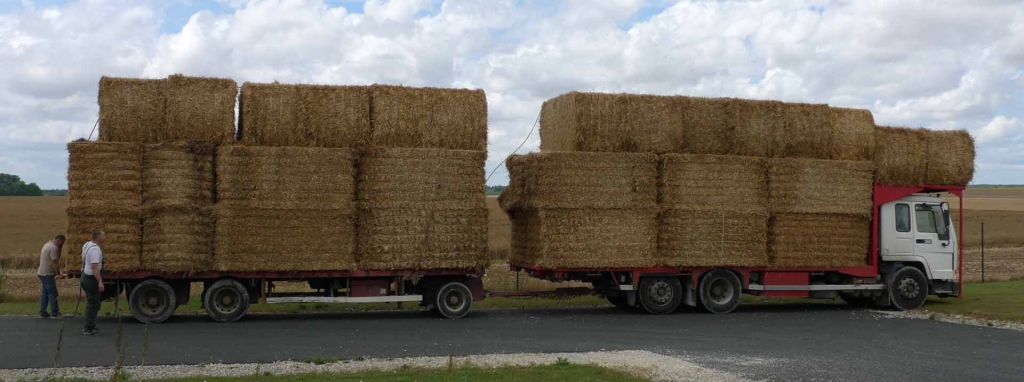Straw is the most undervalued renewable resource. The world has 1.5 GHa of arable land producing a wide range of crops. Food crop residues yield 3.5 billion tonnes per year much of which is destroyed as waste.
The availability of straw varies between countries. Different crops yield different amounts of straw and local practices have different demands on it. Nevertheless in most countries straw remains highly available at low cost.
Until the development of the Grasshopper machine the choice of suitable straw was limited to wheat barley and rice. Today boards can be made from virtually any agricultural residue thanks to a better understanding of the binding mechanisms of compressed fibres.
Rice and wheat remain the straw of choice for fire resistance and durability but coarse grains and cane derivatives can make very stiff and light panels. These new feed stocks triple the volume of material available for board production.
 Receiving Hesston bales of wheat straw in France.
Receiving Hesston bales of wheat straw in France.
SRL can advise on factory location based on the distribution of straw in your region. Stramit factories do not need to be in countries with high productivity, as long as there is good availability within a 30 km radius of the factory and the ability to collect from further away if necessary.
